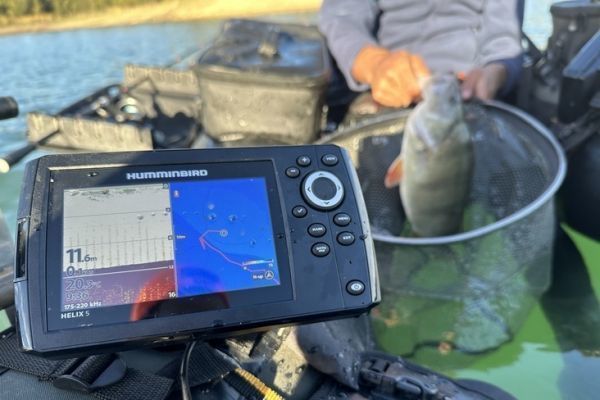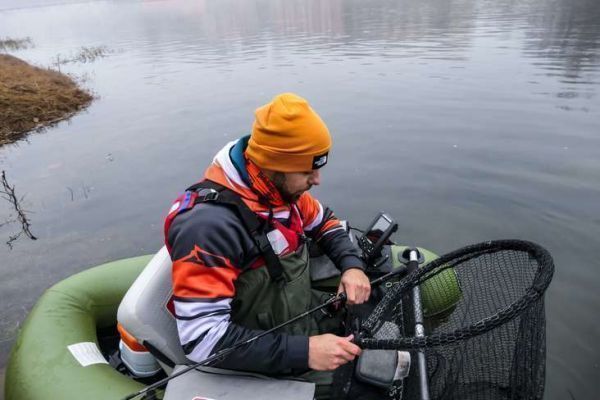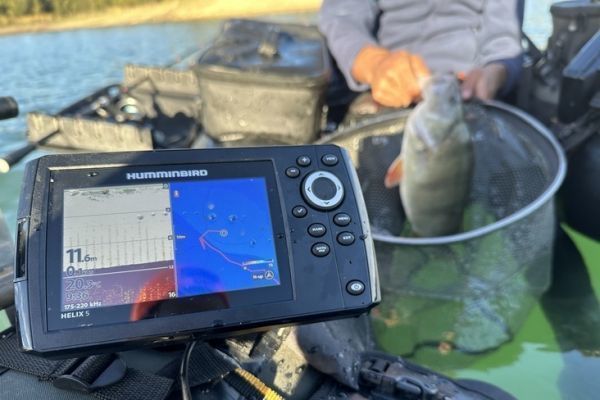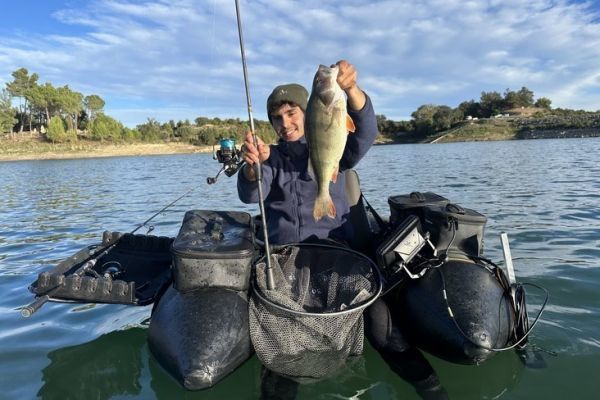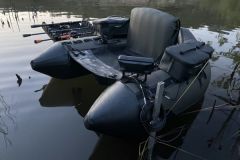Classic or portable depth sounder ?
There are now, in addition to the "classic" sounders that equip fishing boats, portable sounders in the shape of a ball like the Deeper, which connect to a phone or tablet, to transcribe the detections.
These fishfinders have the advantage of containing both the battery and the probe and are very compact. The disadvantage is that they must be connected to a telephone. This means that you'll need an external battery for the phone for longer sessions, and you'll need to invest in a dedicated stand to avoid accidents. On the other hand, a traditional fishfinder is more cumbersome and requires a 12-volt battery. But the technology built into the unit, its autonomy and its duration over time are more important! A conventional sonar unit is also more expensive to purchase than a portable sonar unit and less versatile. Indeed, it cannot be used for fishing from shore, unlike its competitor.
Both have their advantages and disadvantages, so it's a good idea to weigh the pros and cons before deciding to invest in a fishfinder.

Which technologies?
Choosing a sonar model is tricky for a beginner. With all the technologies available, it is quite easy to get lost. The basic detection is the 2D which allows to see everything that happens under the float-tube, depth, bottom structure, fish ...
Another technology, often as an additional option, the DI (down imaging) which also offers a vertical view of what is happening under the float-tube, but with a much better definition and a much more accurate representation with shading. This makes it easier to interpret the 2D. These two views are very complementary.
Finally, a very interesting technology, especially for prospecting: SI (side imaging) which is a side view with 3D representation. This offers a much wider field of vision, making it easier to find breaks, structures, and even schools of fish that would not be under the cone of the technologies mentioned above.
Finally, some models are equipped with GPS, so they are called combined sounder/GPS. They offer the possibility to add a map or to draw a map yourself with a software like autochart and more simply to mark a point when you detect an interesting spot!
What size sounder?
On the market today, there are nearly every size of fishfinder screen, from 4 inches to over 20 inches. However, on a float tube, since the screen is placed fairly close to the angler, it is not necessary to have a large screen. It's not even recommended to choose a model larger than 7 inches, which would be too big and become annoying during fishing!
Large screens are also more power hungry, which causes problems for the batteries. The good compromise, and the one most used by float-tube fishermen, is undoubtedly the 5-inch size, which allows a comfortable screen sharing between two displays (2D-Card, or 2D-Down imaging for example).

Which battery?
As for the battery, there are two options for the float-tube fisherman: the lead battery and the lithium battery.
-
Lead-acid battery: first interesting point, the price. It is possible to get one for less than 50 euros. Price to which you will have to add an adapted charger. The connections are made in a fairly simple way with lugs, and with a 12ah you will last more than a day without worries for a 5-inch fishfinder! For long sessions of several days and/or for a 7" fishfinder that is a bit greedy, the autonomy can be limited.
-
Lithium battery: it is advantageous in every way. It is much lighter, more compact, faster to charge. Its autonomy is very important and some of them are even equipped with an additional USB plug, ideal for connecting a phone or an onboard camera. The only negative point of the lithium battery is its price. Although they are becoming more accessible over the years and their democratization, you will have to pay about 10 to 15 times the price of a lead battery.
The engine on a float-tube
Some float-tubes are offered for sale with an optional support to add an electric motor, specific to the model or universal. Practical but expensive, as much by the purchase of the motor itself as by the purchase of the battery necessary to its functioning.
The float-tube motor is rather intended for fishing in very large lakes or in rather powerful rivers, environments in which navigation with a fin is tedious. However, with a motor, isn't the concept of the float-tube and its proximity to nature a little too far away?
It is up to each one to judge, but you should know that several models of motorized float-tubes and motors exist on the market, and that it is even possible to build your own support.
